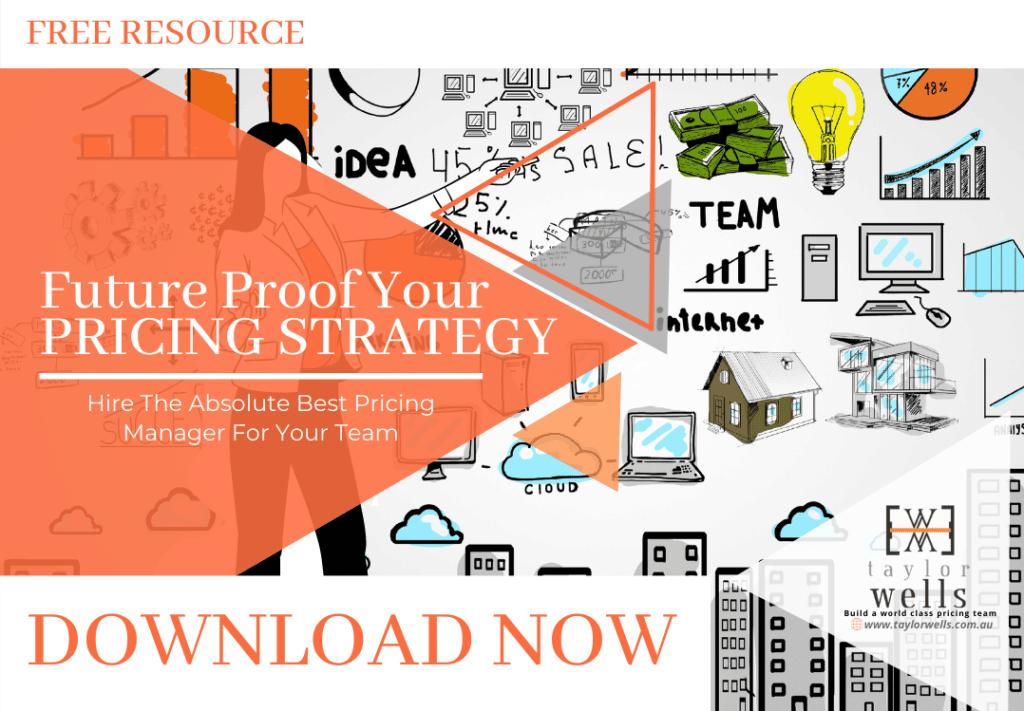
Simple Sales Forecast – Improve your Business’ Future 📝
What will happen to a business when the future seems unclear? How can businesses expect to move forward? How can you track and predict the survival of your business? What is wishful thinking vs. facts-based sales forecast data? These are just some of the questions that you should be asking if you want your company to last for decades.
>Download Now: Free PDF Future Proof Your Pricing Strategy
A simple sales forecast lets you plan ahead to help you achieve your goals throughout the whole financial year. Whether you’re thinking about expansion and growing revenue, forecasting helps you predict your pricing, customer demographics, supply and demand levels, and marketing strategy in the foreseeable future.
Some businesses make a mistake by simply relying on their hunch, initiating false confidence. Others fail to be flexible in their budget and expenses. They don’t consider the implications of their profit and costs. But a forecast can help mitigate the risks and challenges that a business may face.
Take the recent global supply chain chaos. There are those who placed their orders ahead of time before the peak season. And there are others who scrambled through a just-in-time approach.
In this article, we show you how a sales forecast can accelerate your growth revenue and establish your brand. Your predictions should also adapt to the changes in operations during a crisis like the Covid-19 pandemic. Ultimately, a simple sales forecasting involves other teams from management, sales, marketing, and pricing professionals.
What are the factors to consider in the sales forecast?
Key Financials & Figures – These are educated guesses about how much you expect to earn, how many customers you have, how many are willing to pay for your quoted price, the number of orders you will receive, customer churn, and total expenses, etc.
Timeline – your forecast duration should be done every month, reviewed with past forecasts about the number of orders and customers, total revenue, expenses, and customer behaviour. Then this is analysed and compared to previous data, yearly.
Accuracy – There has to be more than one forecast that is flexible. Where could it go wrong? Reevaluate, adjust, review, and update your forecasts as market trends and customer behaviour constantly change.
Simplicity – This includes all aspects of the company and its operational processes. Otherwise, you end up with a one-sided forecast that is inaccurate with only one angle, that may be full of wishful thinking.
To achieve accuracy, this practice could take at least 2 to 3 years of studying past forecasts and sales data in a span of 12 months.
Why do you need a sales forecast?
It helps predict your incoming revenue for a specific period of time. A sales forecast can be done monthly or yearly. You have to look at areas like sales processes, operational issues, and business/supply risks.
A sales forecast will also be helpful when sales volume starts to dwindle and revenue decreases. From your research and data, you could find out the reasons behind the sales decline. Did customers switch to a competitor? Are there product quality issues or a lack of customer service?
Is your business seasonal? If so, then you should be able to expect when the off-peak season and peak seasons are. If you run an amusement park or a beach resort, for instance, you should expect the winter season to be an off-peak season. Otherwise, expect to be fully booked during the summer season.
Peak seasons are also an opportunity to adjust your price setting. It informs you if you need to hire more staff temporarily and how you can manage your inventory better.

A recent survey of over 100 companies revealed that below are some of the things that they did to improve their forecasting accuracy:
1. Analysis
An Australian medical equipment manufacturer researched and monitored market trends across a combination of ASX-listed and Fortune 500 companies.
To stay ahead of the newest developments, they read the latest journals in the health care and manufacturing industry. Since they had a large customer base from both of these markets, they found more selling opportunities that they hadn’t paid attention to before.
2. Involve the senior executives
Start meetings and surveys with clients that focus on their concerns. Find out the customer base’s environment and ask:
- What are your customer’s key goals?
- What are the biggest challenges that they face?
- How do they define success?
- How do they define a lack of success?
Understanding what’s going on from their side allows a company to find more opportunities that they would have otherwise ignored and not known about.
- Are there disruptors or new competitors in the market?
- Keep up with regulatory policies in your industry. There may be some rules that will affect the way you operate.
3. Understand your customer’s urgency
Have the sales team answer questions about how much your customers want your product/service. This gives you a rather realistic foundation to work with.
- What is the ROI for customers?
- Find out the chances of them switching to a competitor, also known as customer churn?
- Are there possible disadvantages of engaging with customers in this manner?
- What are the results or outcomes that you expect from this?
- What are the resources that you and your team will need?
Questions like these shift the perspective of a sales team. They get to put themselves in the shoes of the customers since the goal is for them to be able to express how your services/offerings solve the problems of the customers.
Ask a sales team, “How does your product improve customers’ lives and in what ways?” If they’re unable to express this clearly, then there’s more homework to be done.
Find out how the customers urgently need your services. It’s better to face the truth earlier than make unproven assumptions and have to deal with it later in your forecasts.
4. Automated sales system/services
Invest in software that simplifies data and minimises human errors using artificial intelligence. It’s not simply verbal forecasts or spreadsheets but the convenience, speed, and accuracy you get as you input available data.
5. Retaining talent
How good your sales team is, can often be foretelling of your sales revenue. If most of your sales staff are often laid off or don’t stay long enough to know how to close deals and hit targets, that affects your revenue.
Just think about the time it will take to hire and train new sales staff once again. Instead, cultivate a coaching culture and retrain your sales team. Use monthly certifications and incentivisation to help them perform better.
Involve them in meetings too, because customers often share their suggestions, preferences, and frustrations with them.
6. Monitor your supply line
This way you can monitor what is most in-demand items in your offerings and which ones are in excess supply in your inventory. They won’t be sitting on your shelves for too long – or worse, until they’re expired and become non-consumable. It’s cost-efficient and gives you more room to prepare.
Let’s say your customers had 350 orders of your usual items in the previous months, but due to panic buying, or a competitor’s supply shortage, natural disaster and other emergencies, your order next month will likely be doubled to 450. Preparing ahead gives you enough time to create or place the order for next month. So, you don’t have to deal with agitated customers, bad customer experience, or worse, customer churn,
7. Pricing
Sales, marketing, and research and development teams are cross-functioning fields. Ultimately, the data that they gather will influence the price setting.
If you constantly set your prices too low, you’re losing out on margins. If you set it too high, then you must justify the value that you offer your customers. So, in this case, it’s best to seek the advice of pricing professionals and firms.
8. In case of relocation and other crises
In unexpected emergencies, you may need to adjust your customer demographics, find new opportunities, and re-evaluate your shipping and delivery options if needed.
9. Optimism
A secret to successful businesses is optimism. But it’s not simply blind optimism. Yes, it does wonders to believe that you can achieve your objectives coupled with relentless efforts.
At the same time, your research, data, and forecast should also be based on facts and experience. So, you can make informed decisions when forecasting, coming up with marketing tactics, and setting the price.
〉〉〉 Get Your FREE Pricing Audit 〉〉〉
Bottomline
Your sales forecast should be flexible, managed, and re-analysed over time. It’s not simply making guesses about past purchases of customers. But it’s asking, what are the challenges and mistakes that your business has faced before? How will you deal with them this time?
How can you find more opportunities and expand your customer base? Does the value that you offer represent your pricing accurately? Or are you relying constantly on lowering your prices to meet sales volume?
If you don’t investigate and look into the past, there won’t be room to make accurate predictions for the future.
For a comprehensive view on driving pricing strategies to maximise growth,
Download a complimentary whitepaper on How to Drive Pricing Strategy to Maximise EBIT Growth.
Are you a business in need of help to align your pricing strategy, people and operations to deliver an immediate impact on profit?
If so, please call (+61) 2 9000 1115.
You can also email us at team@taylorwells.com.au if you have any further questions.
Make your pricing world class!

Related Posts
Leave a Reply Cancel reply
Categories
- marketing strategy (26)
- Organisational Design (14)
- Podcast (114)
- Pricing Capability (87)
- Pricing Career Advice (10)
- Pricing Recruitment (19)
- Pricing Strategy (292)
- Pricing Team Skills (13)
- Pricing Teams & Culture (25)
- Pricing Transformation (48)
- Revenue Model (25)
- Sales Effectiveness (27)
- Talent Management (7)
- Technical Pricing Skills (35)





